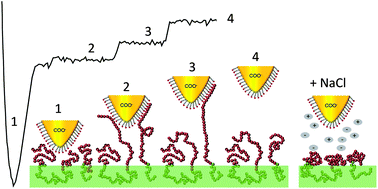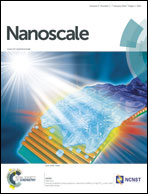Chemical force microscopy of stimuli-responsive adhesive copolymers
Abstract
Atomic force microscopy with chemically sensitive tips was used to investigate the hydrophobic and electrostatic interaction forces of a stimuli-responsive adhesive polymer, and their dynamic changes in response to water immersion and salt concentration. Block copolymer-filled coatings were obtained by incorporating an amphiphilic block copolymer containing a polydimethylsiloxane (PDMS) block and a poly(2-(dimethylamino)ethyl methacrylate) (PDMAEMA) block in a PDMS matrix. Topographic images of fresh samples revealed the presence of nanoscale domains associated with the presence of copolymers, covered by a thin layer of PDMS. Prolonged (30 days) immersion in aqueous solution led to the exposure of the hydrophilic PDMAEMA chains on the surface. Using adhesion force mapping with hydrophobic tips, we showed that fresh samples were uniformly hydrophobic, while aged samples exhibited lower surface hydrophobicity and featured nanoscale hydrophilic copolymer domains. Force mapping with negatively charged tips revealed remarkable salt-dependent force plateau signatures reflecting desorption of polyelectrolyte copolymer chains. These nanoscale experiments show how solvent-induced conformational changes of stimuli-responsive copolymers can be used to modulate surface adhesion.


 Please wait while we load your content...
Please wait while we load your content...